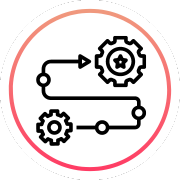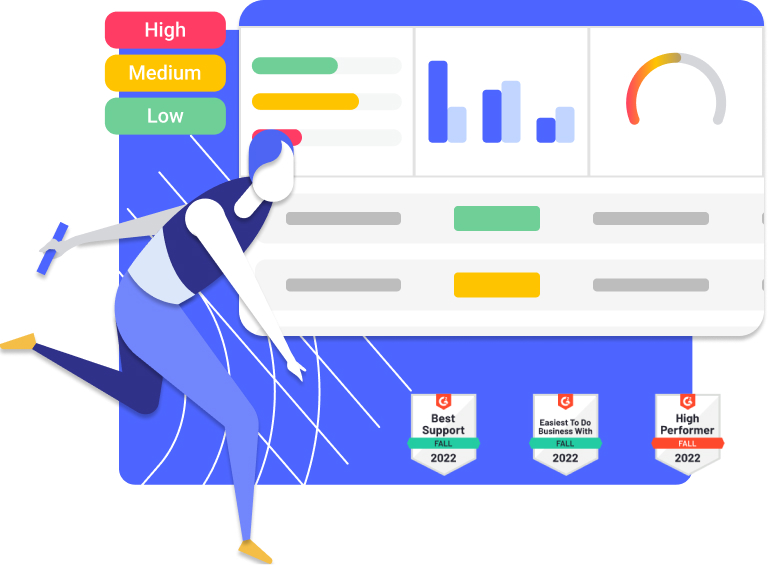In the world of software sales, closing a deal is just the beginning. The real challenge lies in successfully navigating the post-sales process, which involves implementation, customer onboarding, and ongoing support. This crucial phase can make or break the customer’s experience – either leading to a long-term positive relationship or unfortunate churn. In this blog, we will explore the key steps and strategies to effectively navigate this nuanced process and achieve post-sales success.
1. Define Clear Expectations
An integral first step in the post-sales process is to define and establish clear and realistic expectations with your customer. This involves setting specific goals, timelines, and deliverables for the next phase of the customer journey – implementation and onboarding.
As you discuss and set clear expectations for the customer in terms of support, training, and communication during this stage, it’s important that these goals are mutually agreed upon and in line with the customer’s initial motives for signing the deal in the first place. A well-defined agreement ensures both parties are on the same page and reduces the risk of misunderstandings down the road.
2. Cross-Functional Collaboration
Successful software implementation and onboarding often require collaboration across different departments within your organization. During this phase of the customer journey, there are several key stakeholders involved throughout the course of each project, including sales, customer support, product development, IT specialists, consultants, and the customer themself.
These stakeholders need to work together to ensure a seamless transition from sales to implementation to customer success – and handoffs across parties are seamless. Effective communication amongst project stakeholders is essential to address any issues that may arise during the process promptly, deadlines are met, and the project crosses the finish line and reaches go-live on time and on budget.
3. Establish Tailored Implementation Plans
One size does not fit all in software implementation. Each customer and project type may have unique requirements, so it’s crucial to have defined and easily customizable implementation plans that can be tailored to meet the specific needs of each individual client. Take the time to understand their business processes and goals. Customizing the plan will increase the chances of a successful implementation that aligns with the customer’s objectives.
There are three major components to any project plan; Phases, Milestones, and Tasks. Everything else included in your project plan will ultimately feed into one of these components. As you define and build each project plan, it’s important that each stage is structured in a way that makes sense to your team and customer and goals are realistic, achievable, AND measurable.
4. Monitor Progress and Communicate Regularly
A lack of communication and transparency amongst stakeholders can kill any implementation project. Maintaining open lines of communication across teams and with your customers throughout the implementation process will help you keep all parties accountable and ensure your project is progressing.
This phase of the customer journey shouldn’t be a black box when it comes to understanding the status of the project and who’s responsible for what if delays or bottlenecks occur. Your customer needs to be regularly updated on project status and any potentially risks or delays need to be communicated and solutions provided promptly. Consistent communication builds trust and reinforces your commitment to their success.
5. Foster a Customer-Centric Culture
At the end of the day, your customer’s success needs to be at the heart of every implementation. To ensure pre- and post-sales success, instill a customer-centric culture within your organization. Make sure all employees understand the importance of customer success and are aligned with the company’s mission to deliver value to customers throughout their journey.
The post-sales process doesn’t end with successful implementation and onboarding. Continuously provide value to your customers by offering regular software updates, enhancements, and proactive support. Keeping your software up to date and aligned with evolving customer needs ensures long-term satisfaction and loyalty.
6. Conduct Post-Implementation Reviews
Once the software is up and running, conduct post-implementation reviews with your customers. Gather feedback on their experience and identify areas for improvement. This not only helps you refine your processes but also demonstrates your dedication to continuous improvement and customer satisfaction.
Regular customer feedback will give you a clear picture of how effective your solutions and processes are on a consistent basis, allowing you to quickly address any common questions, concerns, or issues amongst your customer base. Prioritizing this type of customer engagement can make a significant difference in the customer’s perception of your software and your company as a whole – helping to foster future business success.
7. Measure and Iterate
Establish key performance indicators (KPIs) to measure the success of your post-sales process. Regularly review these metrics and use the data to iterate and improve your strategies continually. Collecting and monitoring historical project data, resource trends, audit trails, and customer feedback will allow you to learn from past experiences and adapt to changing market and customer needs.
Project data can be harnessed to uncover patterns, trends, and correlations that might have otherwise gone unnoticed. By analyzing this data, organizations can make informed decisions, optimize processes, refine project workflows, templates, and processes, and refine strategies for future implementations.
Crush Every SaaS Implementation
Looking to step up your team’s implementation game?
Regardless of size, your SaaS implementation team can benefit from the strategic wisdom shared in this guide to drive real, measurable results.
Post-Sales Success: The Case for a Purpose-Built Technology Solution
Successfully navigating the software post-sales process is a complex but rewarding endeavor. It requires careful planning, effective communication, and a commitment to customer success. By defining clear expectations, tailoring your approach, and providing exceptional support, you can create a positive customer experience that extends far beyond the initial sale.
In today’s tech-driven environment, software companies have access to a wide array of tools and solutions to streamline and digitize various aspects of the post-sales process. One such invaluable asset that can help you achieve the above strategies is a purpose-built implementation project management solution. Let’s explore how such a tool can significantly enhance your ability to navigate the software post-sales process:

1. Centralized Project Management
A purpose-built implementation project management solution provides a centralized platform where you can manage all aspects of the implementation process. This includes tracking project timelines, monitoring progress, and assigning tasks to team members. Having a single source of truth simplifies communication and coordination among your cross-functional team, ensuring everyone is on the same page.

2. Customizable Project Templates
These solutions often allow you to create customized workflows and reusable project templates that can be easily tailored and customized. You can define milestones, dependencies, and tasks unique to each customer’s needs. This level of customization ensures that you can adapt your implementation plan to match the intricacies of each project.

3. Automated Notifications & Alerts
Automation is a significant advantage of purpose-built implementation project management tools. They can send automated notifications and alerts to team members and customers, keeping everyone informed about important milestones, deadlines, or issues that require attention. This automation reduces the risk of tasks slipping through the cracks and helps maintain project momentum and ensure post-sales success.

4. Document Management
Efficient document management is crucial during software implementation. These solutions often include centralized document repositories where you can store and share essential documents, such as project plans, training materials, contracts, approvals, and reports. This central repository makes it easy for all stakeholders to access the necessary information at any time.

5. Performance Analytics
Many purpose-built tools offer analytics and reporting features that allow you to track project performance, and customer satisfaction. You can measure KPIs, such as project launch times, resource allocation, customer feedback, and support ticket resolution rates. These insights enable data-driven decision-making and continuous improvement.

6. Collaborative Client Portals
These tools often offer collaboration features like client portals that enable closer engagement with your customers. Customers can access project updates, share feedback, and communicate directly with your team through the platform. This transparency and collaboration foster a stronger partnership between your company and your customers.

7. Scalability & Flexibility
As your business grows, a purpose-built implementation project management solution can scale with you. You can adapt the tool to accommodate larger customer portfolios, more complex projects, and evolving business processes. This scalability ensures that your post-sales processes remain efficient and effective.
Post-Sales Success and Purpose-Built Technology
A purpose-built implementation project management solution can be a game-changer in navigating the software post-sales process. By streamlining workflows, automating tasks, and providing valuable insights, these tools empower your team to deliver a smoother and more efficient customer onboarding experience. Consider adopting such a solution to enhance your post-sales operations and set your software company on the path to long-term success.
Never Stop Improving Your Implementation Process
Baton is focused on the implementation process because it’s a critical driver of growth—helping your business keep the upward momentum going while also keeping your reputation intact.




